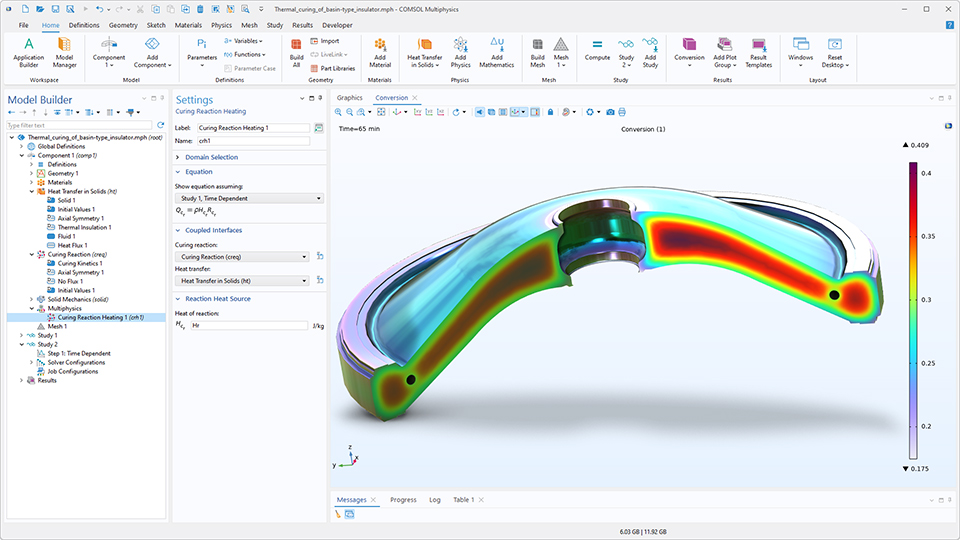Polymer Flow Module Update
For users of the Polymer Flow Module, COMSOL Multiphysics® version 6.4 introduces the ability to model curing processes in both fluids and solids, a new feature to easily enforce periodicity for the flow between two or more boundaries, and the ability to include a pressure jump across a free–porous boundary. Learn more about these updates below.
Curing in Solids
Curing of materials such as composites and adhesives, for which thermal effects are critical to product performance, can now be modeled across both fluids and solids. The Curing Reaction interface has been expanded to support direct modeling of curing processes in solid materials. The extended Curing Reaction Heating coupling links the Heat Transfer in Solids and Curing Reaction interfaces, enabling robust predictions of temperature-dependent curing behavior.

Periodic Condition
A new Periodic Condition feature has been added to the Darcy's Law and Richards' Equation interfaces to easily enforce periodicity for the flow between two or more boundaries. In addition, it is possible to create a pressure difference between source and destination boundaries, either by specifying the pressure jump directly or by prescribing a mass flow. The periodic condition is typically used to model representative volume elements and compute effective properties for use in homogenized porous media.

Pressure Jump Option for the Free and Porous Media Flow Coupling
The Free and Porous Media Flow Coupling has a new option to include a pressure jump across the free–porous boundary. This makes it possible to model, as examples, the osmotic pressure at a semipermeable membrane supported by a porous spacer material or a pressure jump due to capillary pressure in the case of multiphase flow.

